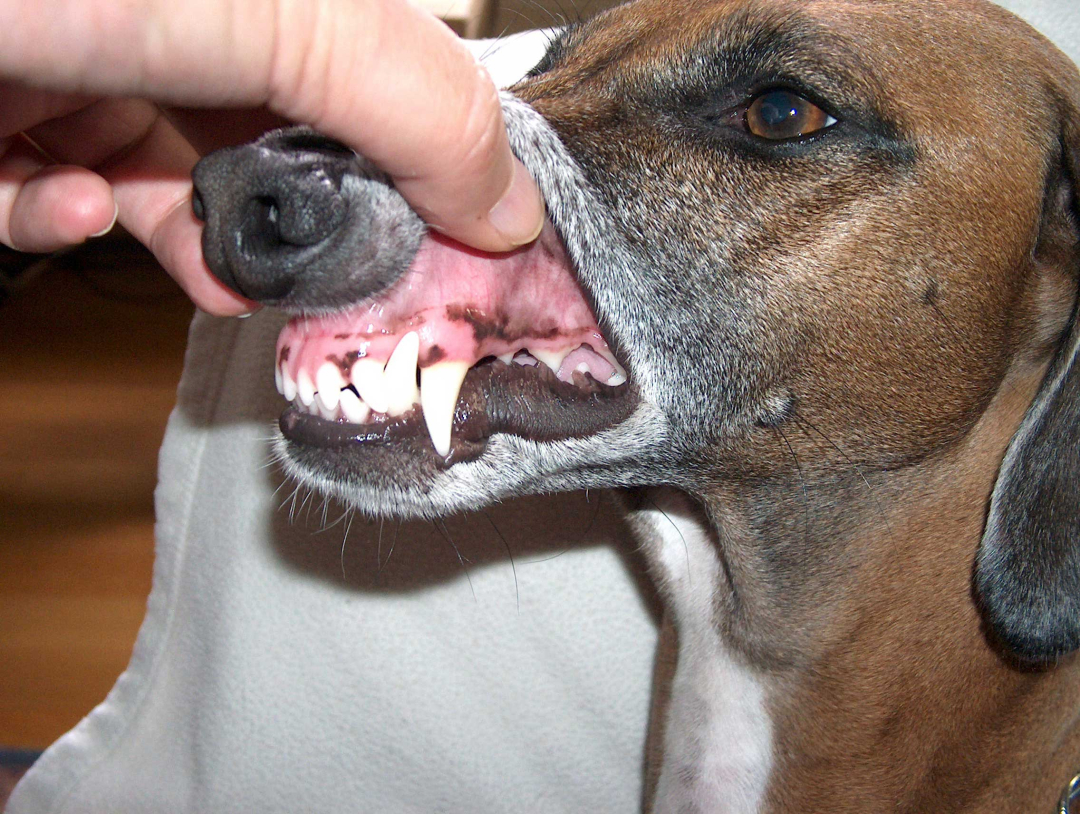
As a pet parent, one of the things that should be a top priority is your dog’s dental health. Regular tooth brushings with a toothpaste that is especially formulated for dogs is extremely important. Hard chew toys or bones also help to keep your dog’s teeth healthy. In addition, it’s a good idea to take your dog for regular vet visits and dental exams to ensure all is well. These are necessary steps to optimize your dog’s dental health. But have you ever wondered how many teeth your dog has?
Most pet owners have never actually looked inside their dog’s mouth and counted the teeth! If you did, you’d find that adult dogs have 42 permanent teeth.
But puppies, just like human babies, have deciduous teeth (milk teeth). The 28 milk teeth start to appear when the puppy is around 2 weeks of age and are completely out by 6-10 weeks of age. In contrast, human children usually have their full set of milk teeth by age 3 years. So, as you can see, puppies are in a hurry to grow up!
Also, unlike human kids, puppies lose their milk teeth rather quickly. The first milk teeth begin to fall out when the pup is around 12 weeks of age. By the age of 6-8 months, a dog has a full set of 42 permanent teeth.
Dogs have four types of teeth in their mouths – 20 in the upper jaw and 22 in the lower jaw, for a total of 42 teeth.
The small teeth in the front of the mouth are called incisors. There are a total of 12 incisors in a dog’s mouth, 6 in the upper jaw and 6 in the lower jaw. Dogs use incisors for tearing meat from a bone. These teeth are also used for self-grooming.
The fangs or sharp pointy teeth in your dog’s mouth are the canines. There are a total of 4 canines in a dog’s mouth, 2 in the top row and 2 in the bottom row. These sharp teeth are used to puncture and grip things.
The 16 premolars (8 in the upper jaw and 8 in the lower jaw) are located on the sides of your dog’s mouth. They are used for chewing and shearing.
The flat-topped molars (4 in the upper row and 6 in the bottom row) are used for heavy-duty chewing and grinding.
Yes, all fully grown adult dogs have 42 permanent teeth, regardless of the breed. So, while it may appear that a Chihuahua’s entire head could fit inside a Mastiff’s mouth, both have a set of 42 teeth.
Some dog breeds are more prone to dental issues than others. In general, smaller dog breeds with more compact heads and jaws tend to have overcrowding and tooth decay problems. On the other hand, some of the dog breeds with the best teeth include Labrador Retrievers, German Shepherds, and Rottweilers. Choosing a small dog vs big dog can therefore affect the types of health problems you might have to deal with.
If you’ve ever had a puppy nip at your heels, you know their teeth are sharp. And if you’ve ever played tug-of-war with your pooch, you may think your dog has very strong teeth. The truth is that dog teeth are quite fragile. The enamel (hard white covering) is six times thinner than human teeth. As a result, dogs can easily break or lose a tooth by chewing on something that’s too hard.
Simple extractions typically cost $15 per tooth but the cost can go up depending on the complexity of the case.
No, dog teeth do not grow back if they are damaged or diseased or lost. If a dog loses an adult tooth, it is gone forever, just like humans. That’s why it’s important to pay attention to your dog’s dental health.
Dogs with advanced dental disease may need a full mouth extraction (removal of all the teeth). Fortunately, dogs can not only survive without teeth but lead a near-normal life. The only thing you will have to work on with the vet is choosing dog foods that are suitable for a dog without teeth.
Yes, there are dentures (fake teeth) for dogs. However, unlike humans, dogs don’t suffer from low self-esteem due to a lack of teeth. And they can eat nearly all the foods they would eat if they had teeth. Moreover, the procedure for fitting dentures in dogs in expensive. For these reasons, fake teeth or dentures in dogs are not common.
So, now you know how many teeth dogs have and also why it’s important to care for your dog’s teeth. An annual professional cleaning may be something worth considering to reduce the risk of bad breath, gum disease, tooth decay, and tooth loss in your dog. You can also talk to the vet about canine supplements that could help to maximize your dog’s oral health.
30 November, 2022